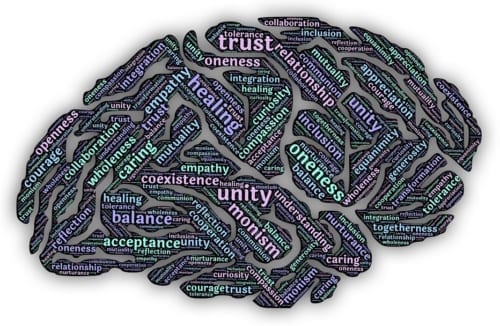Table of Contents
Helping students cope with high stress and high expectations by Matthew S. Howell
 Early in my career as a principal I came across a student in our hallways that did not look well. The blood was gone from her face and she looked ghastly, standing at her locker, binders in hand, Chromebook under her left arm, musical instrument in its case lying at her feet. The bell had rung; she was late, however she was not in a hurry to make it to class. I stopped and asked if everything was alright, and her eyes immediately welled up with tears.
Early in my career as a principal I came across a student in our hallways that did not look well. The blood was gone from her face and she looked ghastly, standing at her locker, binders in hand, Chromebook under her left arm, musical instrument in its case lying at her feet. The bell had rung; she was late, however she was not in a hurry to make it to class. I stopped and asked if everything was alright, and her eyes immediately welled up with tears.
As she began to cry our guidance counselor came around the corner and saw us there. She interceded and asked the young lady if she wanted to go to her office so they could talk. The student began to sob uncontrollably as they turned to walk down the hall.
I closed the locker that was left ajar and offered a few words of support. I knew my counselor would let me know what going on after she made an assessment. A short time later we met to debrief. “Is everything alright?”
“Stress” the counselor told me. “She had gotten an eighty-eight on her algebra test, and the winter concert is coming. She has several projects due by the end of the week and her parents are after her to practice harder for her travel soccer team. She is afraid that she may not make honor roll this marking period too.”
 Unfortunately, this is an all too common scenario. As educators, we are witness to students who are coming of age in an era of information overload. Students are often overwhelmed, anxious and restless. It is not uncommon for learners to be overscheduled as they try to navigate a do-it-all society with do-it-all perfectly expectations.
Unfortunately, this is an all too common scenario. As educators, we are witness to students who are coming of age in an era of information overload. Students are often overwhelmed, anxious and restless. It is not uncommon for learners to be overscheduled as they try to navigate a do-it-all society with do-it-all perfectly expectations.
In a 2015 study conducted by New York University, nearly half (49 percent) of all high school students reported feeling a great deal of stress on a daily basis. The source of these feelings were attributed to grades, homework and preparing for college.
This negative mindset is often associated with attachments to specific outcomes which can be at the root of these overwhelming feelings. Students often have clear-cut determinations about what it means to be a success or a failure, yet they are unclear about what brings them happiness or peace of mind. The associated anxiety can lead to thoughts of self-doubt, fear, and in the case noted above, students who are literally petrified.
The reality is that this is often the norm. While the manifestation of the root cause may vary based on the individual, the driving factors are usually very similar. I have not found a cure for this particular societal ailment; however, I would like to share three things to help students who are struggling to cope.
1.) Authenticity is Key
 Unmet and unrealized expectations have serious implications for a student. When a goal is not complete, an achievement is not reached, a certain status is yet to be attained – it is often considered failure. For some the setback is genuine because the target was determined by the individual. The due course of the process allows for evaluation and adjustment. This indicates an authentic goal that is intrinsically motivated.
Unmet and unrealized expectations have serious implications for a student. When a goal is not complete, an achievement is not reached, a certain status is yet to be attained – it is often considered failure. For some the setback is genuine because the target was determined by the individual. The due course of the process allows for evaluation and adjustment. This indicates an authentic goal that is intrinsically motivated.
Unfortunately, students often operate under expectations that are not of their own design. What’s worse is that the same learner may have little or no awareness of what their own essential desires and goals are. For these students, whether they are high achievers or struggling learners, goals are foisted upon them.
Teachers can encourage students to identify their authentic nature. Allow them to remain in a state of process rather than a firmly wired pattern of starts and stops. Give your learners space to consider how certain tasks feel for them and create evaluative assessments that give pause for self-reflection. Wondrous things can happen for a person when they are able to draw direct correlations from what they do to who they are in the world.
2.) Curiosity is Essential
 Beyond challenge, beyond rigor and assessment, beyond mastery and development, lies the true key to learning which is curiosity. With information at the fingertip and answers to questions seemingly accessible at the touch of a screen, the foundational element of curiosity can be lost for a student.
Beyond challenge, beyond rigor and assessment, beyond mastery and development, lies the true key to learning which is curiosity. With information at the fingertip and answers to questions seemingly accessible at the touch of a screen, the foundational element of curiosity can be lost for a student.
Modern education espouses a belief in the cultivation of lifelong learners, but that often equates to an individual who is able to gather information and synthesize concepts. Of course these are processes that are essential to learning, but they are not the seed of inspiration and creativity. If you want to help develop a lifelong learner, allow innate curiosity to thrive. Support your students in a manner that allows them to freely pursue understanding without the stress and anxiety of attainment. Spark the flames of curiosity.
When fostered and protected appropriately, curiosity can be the impetus for a never-ending pursuit of knowledge. Educators can develop this in their classroom by encouraging imagination. Students should be encouraged to seek connections between topics. Spend time teaching the skills associated with question development. The old axiom holds true; the person with the best question is the smartest person in the room, and great questions are born from curiosity.
3.) Break Free from Standardization
 The more students are asked to complete standardized tasks and assessments, the more internal unrest they will have. Students are naturally intuitive. When asked to complete tasks that are counter to their own internal goals, anxiety and cognitive dissonance can arise. Even worse, high stake tasks that serve no purpose outside of data cultivation are construed as empty and void of purpose.
The more students are asked to complete standardized tasks and assessments, the more internal unrest they will have. Students are naturally intuitive. When asked to complete tasks that are counter to their own internal goals, anxiety and cognitive dissonance can arise. Even worse, high stake tasks that serve no purpose outside of data cultivation are construed as empty and void of purpose.
Educators can design programs and lessons that are free from the negative impacts of standardization. Decenter grading systems by moving to goal-oriented projects without point values. Emphasize portfolio assessments that account for the totality of a student’s efforts. Encourage self-evaluation. Rather than having students submit work in the hope that the teacher will find it acceptable, encourage learners to develop honest standards of self-scrutiny. Ask questions like, what did you get out of the project? How can you see this working in your own life? Where else have you learned similar ideas? Require students to submit these reflections with their final products.
It is great to challenge learners, as a matter of fact, it is crucial to development, but the challenge should not come at the cost of happiness. When the price of academic rigor is emotional unrest and uncertainty then the expense is too high. Finding another approach will ensure that students are productive and engaged in the near and far-term.
Author
Mr. Matthew Howell has earned a Bachelor of Arts degree from Montclair State University. He has also earned his Master of Arts Degree from Seton Hall University in Educational Leadership and Supervision. Mr. Howell is certified in English education and as a principal and school administrator.
Mr. Howell has served in the Oceanport School District since September of 2012. In addition to Oceanport School District, his 14 years in education include positions in Somerset, Ocean Township, Millstone and Hazlet. Mr. Howell’s professional experiences include classroom teaching, coaching, supervision, and administration. He has held positions at a number of age levels. Mr. Howell is passionate about education and he firmly believes that every child can succeed. Follow Mr. Howell on Twitter.
Further Reading
- USA Today – Teens feeling stressed, and many not managing it well
- NBC News – Teens More Stressed-Out Than Adults, Survey Shows
- The Atlantic – High-Stress High School

